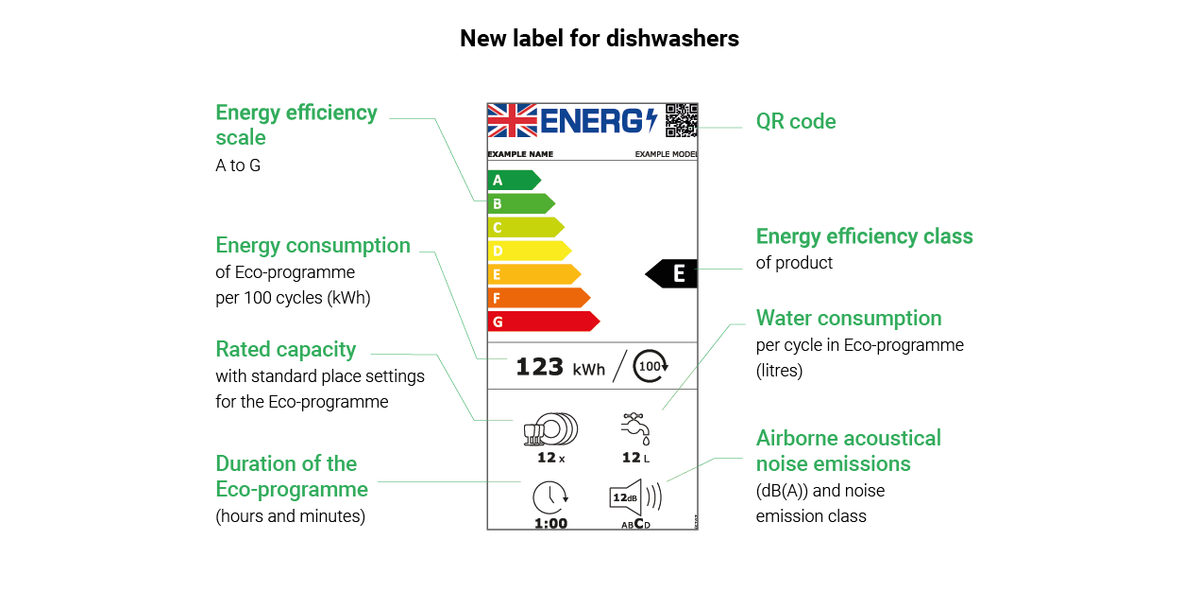Energy labels explained
The energy label has been a mainstay of appliances and products for more than 25 years. It's supported consumers and professional buyers in the searching and choosing of energy efficient products, and helped manufacturers and retailers develop more innovative and efficient products.
Due to increased demand for more environmentally friendly options, the energy that products use has reduced. This meant that the old labelling scheme - ranging from A+++ to G - had become less effective. This made it more difficult for consumers to identify the most efficient products.
The label has therefore been revised and optimised. The new label, which started to appear in high street and online shops from March 2021, features a new, simpler range: A to G. Explore our website to find out more about the changes
Label scale
There is one single scale for all rescaled products, covering from A to G. A+, A++ and A+++ are not in use anymore. The colour scale in the label hasn't been changed, it has become a central element to the energy label making it easily recognisable and useable.
Energy consumption
The energy consumption of the products is shown in a more prominent way in the middle section of the label. Consumption is presented either as kWh per year, kWh per 1000 hours or kWh per 100 cycles, depending on the product group.
Appliances covered:
- Domestic Refrigerators and Freezers
- Wine Storage Refrigerators
- Washing Machines
- Washer-Dryers
- Dishwashers
- Televisions
The energy consumption figure shows you the units of electricity use in kWh to allow comparisons between models.

Climate classes
All Fridges, freezers, and fridge-freezers are all designed to operate in specific temperature ranges (these are known as 'climates'). The chances are if you place a fridge or a freezer in a kitchen or in a separate room inside your house, which are the most popular places, it is very likely that it will operate as intended. Though DO NOT place it next to any heat source, i.e cooker, radiator etc. Many people use an outside building such as a shed, garage or outhouse to place their freezers and fridge freezers. This may mean that your appliance is trying to work outside the temperature range it was intended for and this could cause problems. All fridges, freezers and fridge freezers are indicated with a CLIMATE CLASS(S) that they operate in. These are listed below:
Appliances are intended to be used at an ambient temperature between X [lowest temperature] °C and Y [highest temperature] °C’
| Climate Class |
Minimum Temperature |
Maximum Temperature |
| N | + 16°C | + 32°C |
| SN | + 10°C | + 32°C |
| ST | + 18°C | + 38°C |
| T | + 16°C | + 43°C |

